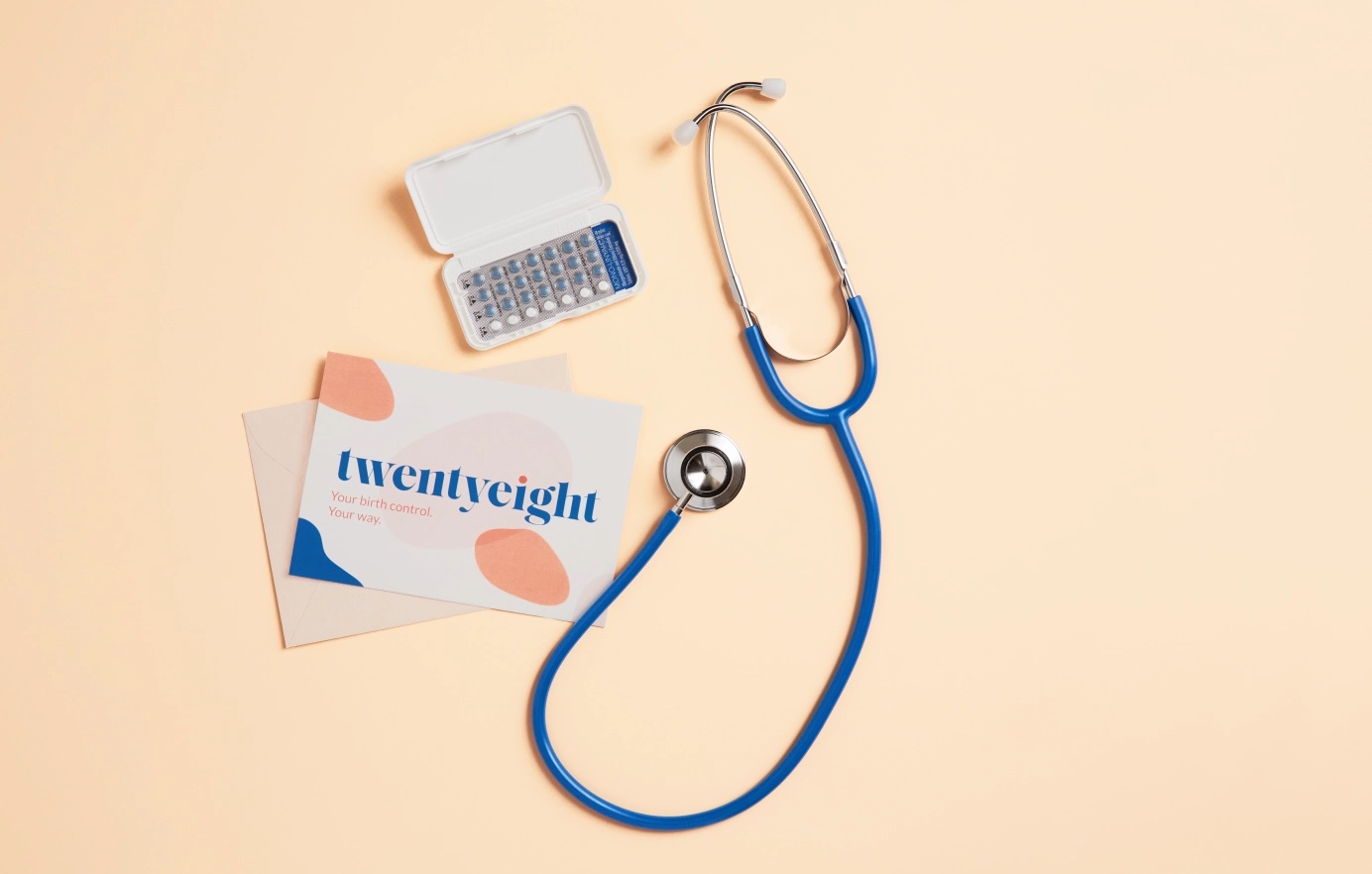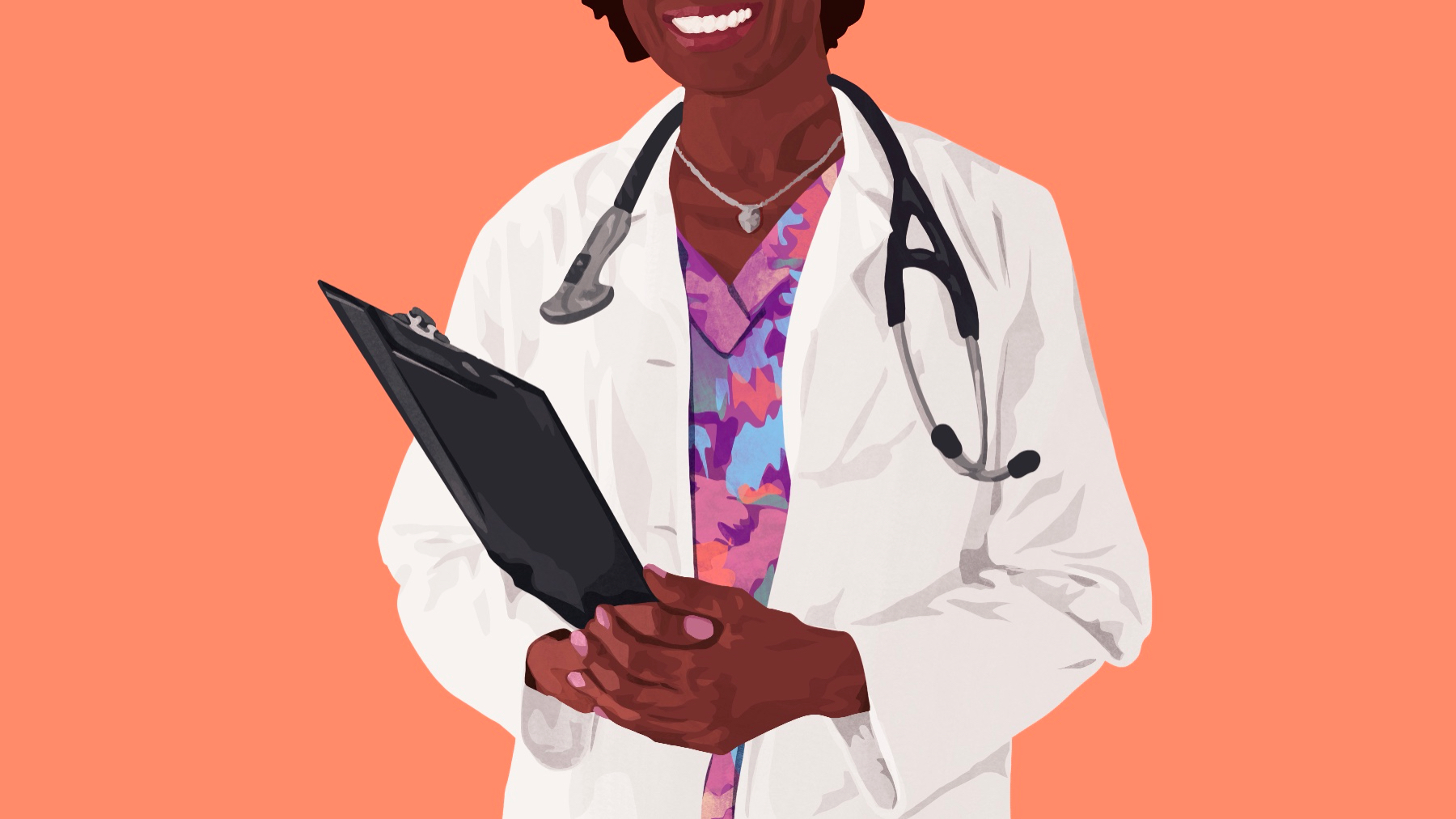In recent years, previously taboo topics such as fertility, menstrual health, menopause, and postpartum depression have moved into the mainstream, fueling the growth of the women’s health category.
Most prominently, a boom in “femtech” has attracted investors, helping turn companies like Maven, Kindbody, and Hers into billion-dollar brands. Not slowing down, the category is expected to reach $1.2T by 2027.
But, despite growing interest, most of the innovation to date has been narrowly focused on sex-specific conditions in overtly feminine verticals.
As a result, too many issues within women’s health remain overlooked with a substantial care gap.
In this report, we’ll cover:
- Women’s influence on healthcare
- Understanding the gender care gap
- A playbook for more inclusive care
- Sex-aware care, point solution rollups, and more
Bringing the issues to light, the year ahead presents a renewed opportunity to expand the definition and scope of women’s health while also improving the quality and equality of care.
Background
When it comes to health and wellness, a woman’s influence cannot be ignored.
- Women control 80% of household healthcare decisions and purchase 93% of all OTC pharmacy items compared to men.
- Women spend 38% more on healthcare per capita during their lifetime (and nearly 80% more during their reproductive years).
- Women are 75–85% more likely than men to use digital health-tracking tools.
Recognizing these tendencies, it’s no wonder why investors are paying more attention to the category. But, the pace of progress is plateauing.
According to Pitchbook, investments into women’s health businesses represented a mere 3% of total healthcare deals in 2022, with deal count and capital raised remaining relatively flat over the past three years.
Even when “femtech” reached its height in 2021 with 141 category-specific deals, this peak still paled in comparison to the 3,800+ healthcare VC transactions that happened in the same year.
Mirroring the troubling trend in the broader US healthcare system, femtech spending hasn’t translated to better patient experiences or improved health outcomes for the majority of women.

Understanding the Gender Care Gap
The gender care gap refers to the numerous barriers women face when attempting to access healthcare.
From diagnosis to treatment options to patient experience, women and those affected by misogyny or women’s issues (womxn) have historically received unequal or lower quality of care compared to men.
Part of the problem, traditional medicine has systemically failed women, as most of its interventions were designed for men. For instance, it wasn’t until 1993, when the US Congress passed the NIH Revitalization Act, that women were required to be included in clinical trials.
Even now, women are heavily underrepresented in medical research — seen recently in testing for COVID antiviral treatments. A follow-on effect of underrepresentation, women react differently and oftentimes with worse side effects to prescription drugs.
Unsurprisingly, the disparities between health outcomes are evident:
- Women are diagnosed on average four years later than men across 770+ diseases.
- Women are less likely to be admitted to a hospital for chest pain and are 20% more likely to die from a heart attack.
- Women are significantly more likely to report needing mental health services compared to men (50% vs. 35%, respectively).
- Women typically get prescribed less pain medication after identical procedures.
This unequal treatment could stem from unconscious bias, as 66% of women feel misunderstood by the healthcare system and are more likely than men to say a healthcare provider has dismissed their concerns.
- One in three (30%) believe their negative treatment experience was because of age bias.
- One in five (20%) say they were mistreated because of their gender.
- 38% of Black women say they feel they were treated this way because of their race/ethnicity.
Worse, 84% of women say that, because they’re not listened to by clinicians, they often have to advocate for themselves over multiple visits to receive a diagnosis.
If they did eventually get a diagnosis, women felt there were limited opportunities to discuss treatment options, and their preferences were often ignored. As a result, many women are forced to seek out additional information and alternative care themselves.
Opportunity
Women’s health is not a niche category; it represents half of the world’s population.
While some industry forecasts pin the market at reaching $58.2B by 2030, expanding the focus to include both women’s-only conditions and those that disproportionately affect them pushes the category well over $1T.
Primed for continued growth, the need for a more holistic approach to women’s health—across preventative care, reproductive health, chronic conditions, and athletic performance—cannot be overstated.
Hélène Guillaume Pabis, founder of women’s training app Wild.AI, believes it’s a rare opportunity to be able to have such a significant effect on such a large percentage of the population:
“Womxn have an incredible machine as a body, and science is just learning how to fuel and use it properly. We want to make womxn—and mxn—change their perception on what ‘a womxn’ is, and our goal is that no girl or womxn ever thinks that her body is a lesser version of a man’s.”
Punchline: The term femtech was coined in support of businesses explicitly focused on feminine health issues. Womxn’s wellness, on the other hand, is about holistic care and the more inclusive treatment of women across their lifetimes when faced with various disease states.

A Playbook for More Inclusive Care
Hoping to bring much-needed solutions to the expansive women’s health sector, founders would be well served by listening to their customers to avoid pitfalls inherent in traditional offerings.
In doing so, it’s important to understand:
- Where women feel they’ve been underserved
- What is most important to women when interacting with them
- How to address the female demographic to correct these inequities
- Which solutions will be most important in the year to come
1. Where women feel they’ve been underserved
According to a study of more than 1K women aged 18–65, the main issues stem from being misunderstood and marginalized:
- 44% believe they’re not taken seriously by healthcare providers, particularly when it comes to pain.
- 39% think providers lack understanding of women’s lives and experiences.
- 34% think providers lack knowledge of the female body.
- 26% cite poor communication from healthcare providers as a barrier to more inclusive care.
Underlying the issue, the historic “siloing” of sex-specific conditions from other clinical issues is a major contributor to the underperformance of healthcare for women more broadly.
Decoupling the women’s experience from conventional care experiences can have an outsized impact on a myriad of ailments, from heart disease to mental health to age-related morbidities such as disability and dementia.
2. What is most important to women when interacting with them
Quality of care suffers when communication is poor — and 61% of women say that poor language has negatively affected their health and well-being.
Specifically, communication that lacks empowerment, support, or inclusivity and that reads stereotypical, patronizing, or unrealistic is an issue.
Taking notice, health and wellness brands will benefit from authentic and constructive communication with customers. Already, companies like LOLA, Hey Jane, Midi Health, and Twentyeight Health have found success in confronting taboos head-on to spotlight previously stigmatized women’s health topics.
3. How to address the female demographic to correct these inequalities
To meaningfully address women’s pain points, healthcare companies would benefit from considering the following best practices:
- Err toward believability and an action-oriented mindset. Listen to women’s questions and concerns, believe them when they say they’re in pain, and treat them like equals with a solutions-first approach.
- Be mindful of women’s lived experiences and cultural differences. Communication must reflect the experiences and challenges all women face in their everyday lives, empowering them as partners in the decision-making process. Having culturally competent or bilingual providers can also support patients’ ability to voice concerns and receive quality care.
- Use community to your advantage. Friends and family (read: “people like me”) were rated as the second-most trusted voice of authority for health information after healthcare workers. To this end, brands should balance expert language with more relatable communication from customers (testimonials, community forums, etc.) to foster loyalty and advocacy in an authentic way.
- Treat women holistically. Health companies and their providers must take stock of women’s many biological life phases, remembering that certain health conditions—like hormonal changes associated with puberty, maternity, and menopause—might make women more prone to additional comorbidities. Screening for interrelated issues should be a proactive consideration.
- Increase accessibility and affordability of care. Women are more likely than men to skip a recommended medical test or treatment due to cost. To close the gender care gap, it’s critical that providers offer more appointments on nights and weekends or through telehealth. In addition, healthcare facilities should consider offering child-friendly areas so patients don’t need to sacrifice health appointments for childcare.
- Leverage digital. The internet is a leading source of health information for women, where they are increasingly looking to learn from the experiences of others. Having a founder that is a spokesperson for her business and the public face of a health issue—like Lo Bosworth of Love Wellness, Arielle Spiegel of Cofertilty, and Lulu Ge of Elix—is a win-win.
- Improve clinician training and understanding of the female body. Being dismissed for pain-related issues was a top concern among women across studies. Doctors would benefit from more training around why women might be experiencing certain pain, as well as what pain threshold is “normal” versus something to be concerned about.
- Increase representation of women in medical research and clinical studies. Treatments found to be effective in clinical trials can’t be confidently applied to all populations when certain groups are not adequately represented. Put bluntly, we need to ensure women are being considered (and sought out) for clinical studies. Businesses focused on bringing more equality into clinical studies will be key to closing the gender care gap in 2023 and beyond.
4. Which solutions will be most important in the year to come
Sex-aware and gender-sensitive platforms. Although there’s room for more sex-specific care, it will be important for businesses in health verticals beyond reproductive health, maternal care, or fertility to shift toward sex-aware care (care for conditions that are diagnosed or treated in sex-specific ways) and gender-sensitive care (care provided in ways that reflect gender-specific preferences).
While sex-aware care is and will remain an ongoing learning curve across disease states, gender-sensitive care is already taking shape with businesses like Folx Health and Plume.
Comprehensive primary care facilitated through point solution rollups. We’ve already seen a movement toward comprehensive womxn’s wellness in companies such as Tia, Visana Health, Kiira, HerMD, and Caraway Health. From an employer standpoint, Peppy and Maven are leading the charge.
In 2023, expect to see more healthcare rollups as point solutions begin to come together under related umbrellas. Telehealth startups will have to prove they work or adopt value-based care models to maintain contracts with employers — and this might mean partnering up to ensure successful outcomes.
Healthcare tailored to underserved demographics, particularly BIPOC women and the Medicaid population. Even within sex-specific care categories such as maternal and reproductive health, healthcare is inequitable and, in some cases, worsening every year.
Specifically, Black mothers of all ages are three times more likely to die from pregnancy-related complications and 27% more likely to experience severe pregnancy complications than their white peers. Maternal mortality is also significantly higher in rural areas, where obstetric providers may not be available and where Medicaid coverage is highest.
While few companies place an explicit emphasis on supporting women in these groups at present (exceptions in Twentyeight Health, Mae, Cayaba Care), we hope to see more across health verticals in 2023.
The recent omnibus package for fiscal year 2023 should aid in this expansion, with over $9.7B dedicated to improving health outcomes in rural areas through improved broadband access and extended coverage for telehealth, among other provisions.
Platforms that promote life stage preparedness, specifically around young adulthood and menopause. Sexual health and mental health top the list of topics women were embarrassed to discuss with healthcare professionals across age groups. Interestingly, these issues (including eating disorders, weight gain, and incontinence) are most present during transitional periods — puberty and menopause.
For the pre-pubescent stage, businesses can break stigmas by providing sexual education and health information not shared in public schools. For mature women, perimenopause platforms could help better prepare women for symptoms before they happen or possibly even prevent symptoms through early testing and interventions such as hormone replacement therapy.
Businesses such as Midday, Elektra Health, and Mina Health are stepping up to fill information gaps in these categories. Still, we lack solutions for life transition preparedness more broadly as well as those addressing the intersection between mental health and weight loss/body image.
Pelvic health education and pelvic floor physical therapy (devices & services). Roughly a third of women suffer from one or more pelvic floor disorders (PFD) in their lifetime. And not all of them are elderly. Endometriosis and its unfortunate side effect of severe vaginal pain affects more than 190M women and girls globally.
However, many women don’t seek treatment due to embarrassment or simply accepting symptoms as a natural part of life. This doesn’t have to be the case.
A growing body of research around PFDs shows that treatments such as pelvic floor physical therapy, hot/cold contrast therapies, and red light therapies can significantly improve symptoms and onset of PFD, including pain experienced through endometriosis.
Businesses like Hyivy (multimodal rehabilitation system), Elvie (smart kegel trainer), Joylux (red light therapy vaginal toner), and Origin (pelvic floor PT) are making waves in this category.
In 2023, as stigmas continue to fade and these solutions become recognized by payors as legitimate and reimbursable, we expect out-of-pocket costs to decrease, encouraging additional competitors to come to market to meet demand.
Solutions addressing the caregiver burden. Women tend to take on chief caregiver roles for their households, particularly for children and the elderly. This can take a toll on women, especially those who attempt to care for their aging parents while raising children — a demographic described as the “sandwich moms” by Michael Yang from OMERS Ventures.
In 2023, we hope to see an increased emphasis on healthcare navigation tools, community support resources, and financial advice — ideally rolled up into a seamless platform for caregivers to navigate.
Looking Ahead
Although tremendous progress has been made in women’s health, the gender care gap can only be closed when the stigmas and biases are removed, systemically. As with all industries, coordinated policy and action is essential to make this permanent, but we believe change will start in the private sector.
It’s time for healthcare businesses across categories to begin thinking about what it means to cater to women as a core demographic, even among verticals that aren’t sex-specific or inherently “female.”
Armed with this information, startups in any healthcare sector can help better address the needs of all women. Only then can we begin to close the gender care gap and redefine what it means to be a company that caters to womxn’s wellness.
Founders who attempt to tackle these challenges holistically, through digital mediums, while carefully considering the age, geography, and ethnicity of the women they serve will ultimately help shape womxn’s wellness in 2023 and beyond.
Dive deeper: Head here for a market map and resource archive dedicated to the Womxn’s Wellness Landscape.
This report was co-authored by Jess Schram, investor at Swiftarc Ventures, with contributions from Fitt Insider’s Ryan Deer.
 Illustration: Courtney Powell
Illustration: Courtney Powell

